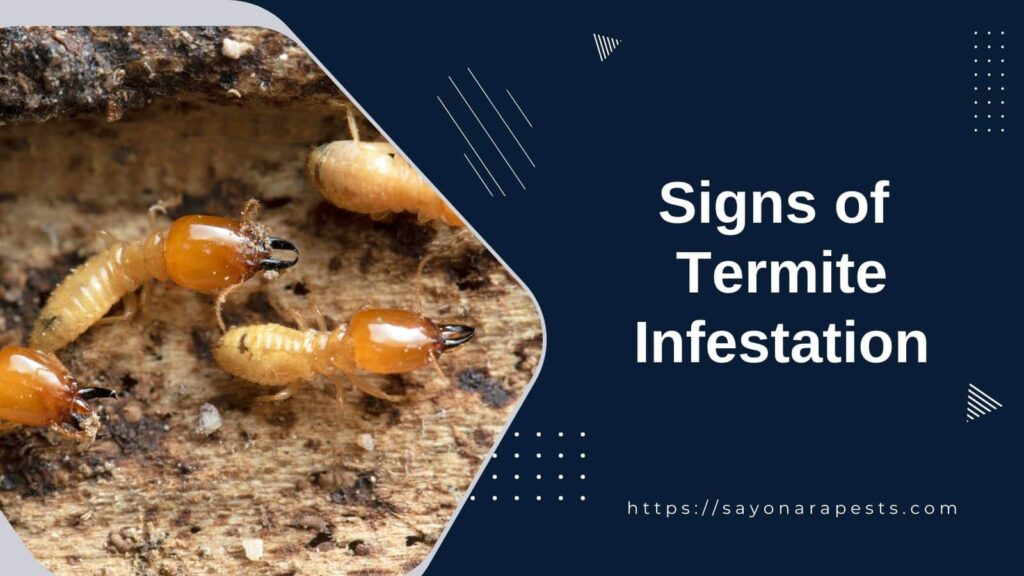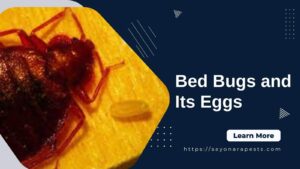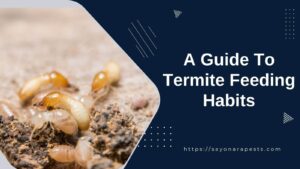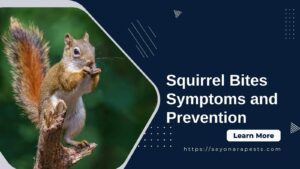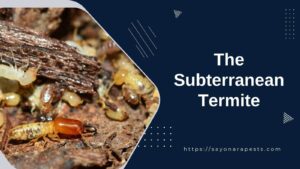Termites are small, pale, ant-like insects that are often referred to as “silent destroyers”. With their unique feeding habits, they are known for their ability to cause extensive damage to wooden structures, furniture, and other cellulose-based materials.
Moreover, considering the complexities of their life cycles, the possibility of having termite infestations is something that is nearly inevitable.
If left untreated, a termite infestation can weaken the structural integrity of your home, making it unsafe to live in. Termites also cause health issues, as their droppings and saliva can trigger allergies in some people.
This article aims to highlight the signs of a termite infestation in your home. It is essential to be aware of these signs to take immediate action to prevent further damage.
Identifying a termite infestation early on can save money and prevent potential damages
Signs of Termite Infestation
Evidence of Wood Damage
One of the most obvious signs of termite infestation is evidence of wood damage. As termites tunnel through wood, they create long grooves and channels known as galleries. These galleries weaken the wood’s structural integrity and can cause it to break or collapse.
Wood damage caused by termites may appear as small holes or tunnels on the surface of the wood. In some cases, the wood may look like it has been hollowed out from the inside, leaving only a thin layer of wood on the surface.
Presence of Termite Droppings
In addition to visible damage, another sign of termite infestation is the presence of termite droppings or frass. Termites produce tiny, pellet-like droppings that resemble sawdust or coffee grounds.
These droppings can accumulate near the infested wood or termite nests.
Presence of Swarms
One of the most apparent signs of a termite infestation is the presence of swarms.
Termite swarms typically occur in the spring and early summer when the weather is warm and humid. These swarms are made up of winged termites, also known as alates, which are reproductive members of the termite colony.
The purpose of these swarms is for the alates to mate and establish new colonies.
If you see swarms of termites in or around your property, it strongly indicates an active termite infestation.
Mud Tubes
Mud tubes are one of the most obvious signs of termite infestation in a building. These tiny tubes are created by termites as they move between their nest and the wood they are feeding on.
Mud tubes can be found inside and outside a building but are most commonly seen on the exterior walls. They are typically made of mud, soil, and wood particles and can be anywhere from the thickness of a pencil to several inches in diameter.
Termites use mud tubes to protect themselves from predators, maintain moisture levels, and regulate temperature. Because termites are fragile and susceptible to dehydration, they must maintain a moist environment within their tubes to survive.
Hollow Sounding Wood
If you tap on a piece of wood and it produces a hollow sound, it strongly indicates that termites may be present. However, it’s important to note that other factors, such as dry rot or carpenter ants, can cause wood to produce a hollow sound.
Therefore, inspecting the wood thoroughly to determine the exact cause of the hollow sound is essential.
Discarded Wings
One of the most telling signs of a termite infestation is the presence of one of their noticeable anatomical parts, which is discarded wings. These wings are typically left behind by swarmers – the reproductive members of the termite colony.
Swarmers are winged termites that are responsible for starting new colonies, and they are often the first indication of a termite problem.
The discarded wings of swarmers are usually found near windows, doors, or other light sources where the termites have been attracted. Once the swarmers have found a suitable mate and started a new colony, they shed their wings as they are no longer needed.
This process can happen very quickly, and a large number of wings can accumulate in a short amount of time.
Notably, the presence of discarded wings does not necessarily mean a current termite infestation. It could signify that swarmers have entered the home and shed their wings before finding a suitable place to start a colony.
Difficulty in Using Stucked Doors and Windows
Doors and windows that are hard to open and close are a sign of termite damage. Termites are known to burrow into wooden buildings, eating the cellulose inside.
This can weaken the structure of doors and windows. This can cause the wood to warp or swell, which makes it hard to open and close the doors smoothly.
If your doors and windows are harder to open and close than they used to be, this could be a sign that termites are in your home.
Moldy or Musty Smell
A musty or moldy smell in the area is another thing to look out for. As termites eat wood, they make moisture, which can cause mold and mildew to grow.
When termites and mold work together, they can make a smell that is often described as musty or damp. If you smell something like this in your home, especially in places where there is wood, you should look into whether or not you have termites.
Damaged Drywall
Damaged drywall is another sign that termites are at work. Termites can eat holes or tunnels in drywall, which are signs that they are there.
Termites often come in through these small holes, which give them access to the wood structures behind the walls. In extreme cases, the damage caused by the pests that eat everything can cause the drywall to warp or sag.
It’s important to check your walls often, paying close attention to any signs of termite damage, like spots that have changed color or are weaker.
Peeling Paint
Peeling paint can be a sign of termites in a roundabout way. As termites eat the wood underneath the surface, they can cause the paint to bubble or crack, which can lead to peeling or flaking.
This happens because termites make tunnels in the wood, which makes it harder for the paint to stick to the surface. If you see places where the paint is peeling or blistering, especially near wood or damp places, it could be a sign that termites are at work.
Loose Tiles
Loose tiles can also tell you a lot about a possible termite problem. As termites tunnel through the subfloor, they can damage floor materials like tiles.
This can cause the tiles to become loose or uneven, making gaps or a surface that isn’t stable. If you see tiles that have moved or come loose for no obvious reason, you might want to check for termites under the floor.
Overly Squeaky Floorboards
Termites can cause floorboards to squeak excessively, especially if the floorboards were quiet before. Termites can make holes in the wood from the inside, which makes it weaker and more flexible.
Because of this, the floorboards may start to rub against each other and make noises when pressure is put on them. If you hear squeaking sounds when you walk on your floors that are new or getting louder, you should check the area for termite damage.
How To Deal With Termite Infestations
Prevention and treatment of these infestations are necessary, as this will help owners address termite infestations as early as possible to avoid incurring further damage and risks.
It’s also essential to hire professional help to address a termite infestation adequately. Professional termite control services can provide the expertise and equipment needed to address an infestation effectively.
In conclusion, identifying and addressing a termite infestation in your home is crucial for maintaining the integrity of your property.
The signs of a termite infestation include evidence of wood damage, termite droppings, swarms, mud tubes, hollow-sounding wood, discarded wings, and more. If left unchecked, termites can cause extensive damage and costly repairs.
By equipping ourselves with the knowledge and awareness against these insects, we can appropriately prepare and plan actions to combat them. This a valuable step to make our homes a better place without these pests around.

